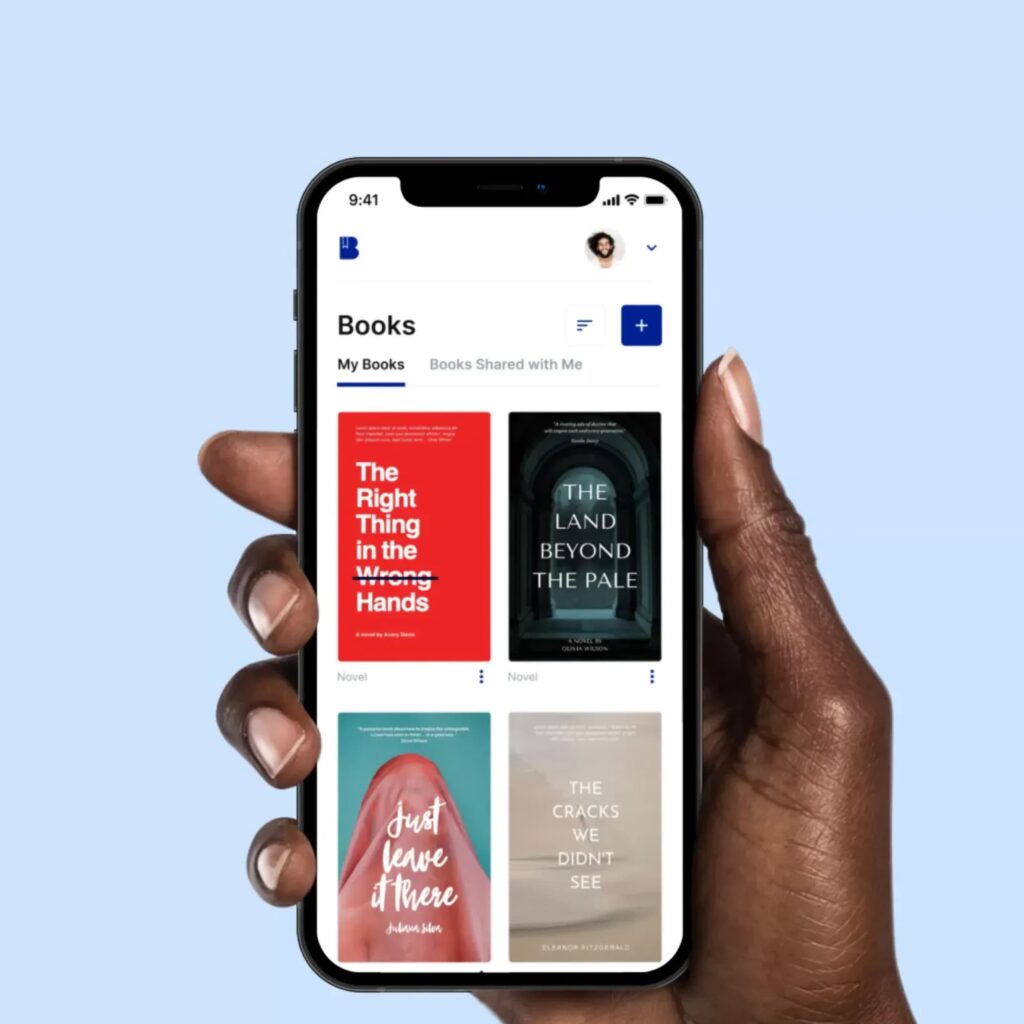Blog
How to Develop Blockchain App: Step by Step Guide

In 2021, the global blockchain funding amount reached an unbelievable $25 billion; Coinbase Ventures supported 68 crypto-based startups. Forecasts say that global spending on blockchain products will jump to $19 billion by 2024. In this article, you’ll find out how to start the blockchain development process, what popular blockchain platforms you can use, and why building an MVP may be your best decision at the initial stages of your company’s growth.
So what should be your first step?
Define your primary goals
Blockchain technologies seem secure and sound popular. Are these facts enough to start blockchain app development? Did you know that 35% of startups fail because there is no market need for their app? You can lose your time and money in an app that doesn’t have a clear purpose. So first and foremost, define your goals and make a plan.
- Is there a real need for a blockchain app you want to build?
- What would you like to accomplish with this product?
- What is your final objective?
- What metrics can you use to measure your progress?
Answer these questions in advance. The deeper you understand your product and its goals, the easier it gets to choose the right blockchain platform, shortlist must-have features for a minimum viable product, and launch a successful app that users demand.
Compare blockchain platforms and choose the suitable one
There are numerous platforms you may consider to develop blockchain apps. The challenge is to find the one that matches your needs.
In this section, we are going to take a look at four popular blockchain platforms – Ethereum, Cardano, Solana, and Polkadot. Check the image below for numbers that represent each of the platforms:
To choose the right blockchain development platform, analyze these eight factors:
- Maturity
- Cost
- Performance
- Type of blockchain platform
- Consensus mechanism
- Development tools and community
- Structure of guidelines
- Smart contract features
A clear product vision will help you focus on the most important features of your app and choose a suitable platform.
Ethereum blockchain platform
- Number of Ethereum projects as of November 2021: 2880+
Ethereum platform was launched back in 2012, and that makes it one of the oldest and the most established options. The platform supports smart contracts thus, Ethereum-based apps may be perfect for NFT (non-fungible tokens) trading.
The platform is built upon a powerful security mechanism. Its strong developers’ community mainly consists of representatives of enterprises like Microsoft and JPMorgan.
However, the platform has some drawbacks. Transaction latency damages its reputation and makes developers and users go look for alternatives. The cost of the transaction is high; in some cases, it even reaches thousands of dollars.
Ethereum wins this battle in terms of a number of projects. There are more projects on this platform than on the other three platforms combined.
Cardano blockchain platform
- Number of Cardano projects as of November 2021: 400+
The disadvantages of the Ethereum platform created favorable conditions for other blockchain platforms. Cardano is one of them.
The platform was founded two years after Ethereum went live, surprisingly, by one of the Ethereum co-founders. Cardano cryptocurrency is the biggest proof of stake cryptocurrency. It means that, unlike Ethereum, Cardano uses not proof of work but proof of state consensus mechanism. As we’ve highlighted earlier, proof of work is rather resource-costly. To decrease the enormous computational cost, the proof of stake mechanism allows choosing validators in the network according to the number of blockchain tokens they own. In 2021, the Ethereum development team started implementing changes to a platform to make it a “greener” solution, while Cardano was initially built on this mechanism.
There are already more than 400 projects that use Cardano. For example, the Free University of Tbilisi utilizes the platform to create a next-generation credential verification system for Georgia.
Solana blockchain platform
- Number of Solana projects as of November 2021: 500+
Solana is a relatively young platform for blockchain development. Launched in 2019, it is a public blockchain platform. Although the SOL cryptocurrency demonstrated an unbelievable jump in price in 2021, and the platform showed the highest transaction latency, it still has vulnerabilities.
For example, in September 2021, it crashed because of the huge number of transactions.
The platform may be a good choice for building blockchain-based apps of different complexity, including DeFi apps and NFT marketplaces.
Polkadot blockchain platform
- Number of Polkadot projects as of November 2021: 500+
This blockchain platform is believed to be the “greenest” blockchain solution. Polkadot is a multi-chain. It has a more complex structure, relations, and mechanism in comparison to other blockchain platforms:
Still, it is rather immature – the platform was launched in 2020. On GitHub, there are 171 Polkadot contributors who actively work on the platform’s improvement.
Here’s a brief comparison of four platforms provided by Businessinsider:
To make the right choice, you should dive deeper into the specifics of each technology and discuss the preferable option with your blockchain development team.
Build a simple product that works and converts.
Get step-by-step guidance from product managers, UI/UX designers, and tech leads, taking you from idea to launch
Plan your MVP
What is blockchain development? This is a process of constructing your blockchain app, from the moment your idea was born till successful product release, maintenance, and further upgrades. In the app lifecycle, MVP development occupies a special position.
This is a proven way to get your product to users’ hands in the most time-and cost-efficient way.
MVP stands for a minimum viable product and represents the critical features of your app wrapped in a simple design and built within the shortest terms. MVP is the basis of the Build-Measure-Learn principle described in The Lean Startup by Eric Ries.
In this section, we’ll guide you through the steps you and your development team need to take to launch an initial version of your blockchain product with minimum effort.
Add details to your idea and create documentation
Do you have a picture-perfect vision of your idea? Or do you lack some details?
We suggest starting with research.
- Check if there is a need for your product. You can start a poll on social media, conduct potential customer interviews, analyze market trends, as well as combine these and multiple more actions to make sure it makes sense to build your app.
- Meet competitors. Look for apps with a similar purpose. Is there a non-blockchain app that heals the same pain point? Is there a company that focuses on that particular market need you would like to address? Try similar apps, identify their strengths and weaknesses, and come up with an idea of a unique selling proposition, or a feature that will differentiate your app.
- Identify risks. When building a startup, you should prepare to enter a rapidly changing, unstable, and risky market. New products come and go; users’ needs change in the blink of an eye. Identify risks your startup may face and develop a risk mitigation plan. Make sure you take all possible measures to save your blockchain project from failure.
- Build a product roadmap. It may be a product roadmap, a product strategy, a business model canvas, or any other document that will become the starting point of your successful business. Talk to your partners and development team, or a blockchain development company to decide on critical documentation and transfer your idea from thoughts to a sheet of paper.
Once you have the initial documentation ready, proceed with PoC development.
Develop proof of concept
To ensure the technical and business feasibility of your app, create a proof of concept.
If we say that MVP is the initial version of your product, PoC is the initial version of MVP. At this stage, it is critical to understand if it is possible to convert your idea into a working software application.
To create a proof of concept, you can use the simplest no-code solutions. Create several main screens of your app and check if it looks usable. Together with your development partner, decide if your idea needs corrections and what features are essential for an MVP.
Think about UI/UX design
As proof of concept is ready, it’s time to create a design approach. Focus on minimalism, choose an attractive color scheme, and check blockchain apps’ design best practices. Talk to a business analyst about the chosen design approach. Does it align with market trends?
Engage a UI/UX designer and together, create app layouts.
Work on technical implementation
Delegate coding to blockchain development professionals. Your app will consist of a back-end part – a server-side of the application, and a front-end part – an app’s interface.
Discuss the technology stack in advance. Set milestones and start two-week Agile sprints. At the end of each sprint, review delivered functionality and measure the team’s performance.
Typically, it may take up to one year to release a simple MVP. Outsourcing software development may speed up the process and take your app to life in around six months.
Blockchain platform improvement, or why your product development should never stop
To stay fit, you need to eat healthily and work out your entire life.
To make your blockchain app-based business stay fit, you need to constantly improve it.
Make the development process iterative.
Launch a piece of functionality -> monetize your app or raise funds -> invest in functionality improvement -> update your app -> get more profit - > invest in functionality improvement and over again.
This circle should last as long as you want your app to stay alive.
The power of custom development
There are multiple ready-made solutions you can use to build a proof of concept. However, they’re not enough for high-quality blockchain development.
Off-the-shelf software may come in handy when you need to act fast. Tools like Figma help to present your idea to your partners; Shopify solutions offer amazing opportunities for building a simple version of your app to validate the idea and collect customers’ feedback.
But once you’re sure your app has a chance to thrive, and there is a target audience willing to try your product, packaged software is not enough.
By choosing ready-made solutions, you trade off the app’s quality, customization, and scalability for a quick launch. As you evaluate your idea and raise initial investments, the time comes to focus on users’ needs – you need to keep the existing ones and attract the new ones.
This is when custom development comes into play.
Custom development means that a team of software engineers build your app from scratch, using the best technologies and the latest development tips. Your team may eventually become your consultant and partner, ready to answer your questions, implement any change or improvement, and support your app in the long run.
With custom software development, you can build an app that 100% meets your requirements and users’ needs.
- While off-the-shelf software offers you a limited choice of design layouts, custom development allows the creation of the most complex and sophisticated user interfaces.
- The quality and security of off-the-shelf software-based apps may be compromised. Custom development allows the implementation of the best practices to make your app impeccable and secure.
- With a custom development approach, you can take care of scalability features. As your user base will grow, the app’s performance won’t drop.
Choosing a trustworthy development partner – a blockchain development service provider – may be tricky, however, with Trustshoring, it becomes as easy as ever. We will help you meet your reliable engineering team and launch a blockchain app according to your requirements and expectations.
Read more


Case study:
Blooksy
Learn how Blooksy moved from concept and raised funding!

AI in Software Development: The Key Opportunities and Challenges

Building Better Products: The Questions You Should Be Asking Your Development Team

Streamlining Operations With Mobile Device Management (MDM) Solutions

All the Software Development and AI Trends to Be Aware Of
Create a free plan for growth
Speak to Victor and walk out with a free assessment of your current development setup, and a roadmap to build an efficient, scalable development team and product.
“Victor has been great. Very responsive and understanding and really knows his stuff. He can go the extra mile by tapping into his prior experiences to help your company out. Really enjoyed working with him.”
Founder of Agency360

Victor Purolnik
Trustshoring Founder
Author, speaker, and podcast host with 10 years of experience building and managing remote product teams. Graduated in computer science and engineering management. Has helped over 300 startups and scaleups launch, raise, scale, and exit.


